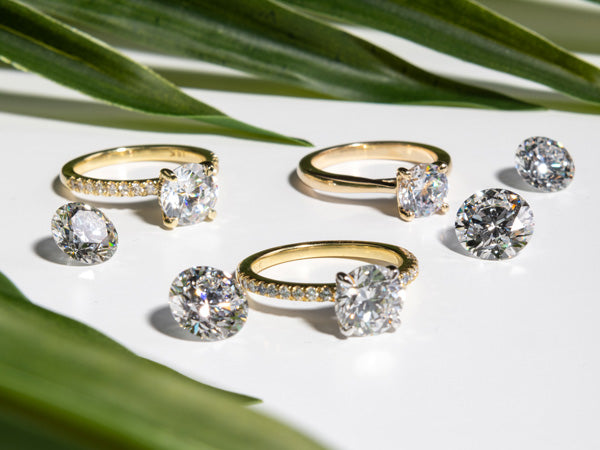Introduction
When we talk about the size of a diamond, we’re typically referring to its carat weight. Carat is a unit of measurement specifically used for gemstones, with one carat equaling 200 milligrams. However, size isn’t just about numbers; it’s about perception and personal taste.
Understanding Diamond Carat Weight
Diamond carat weight is a measure of how much a diamond weighs. It’s one of the 4Cs of diamond grading, alongside cut, color, and clarity. Contrary to popular belief how big is your diamond, carat doesn’t directly translate to size in terms of dimensions; it primarily indicates the diamond’s mass.
How Carat Weight Influences Diamond Size
The heavier the diamond (higher carat weight), the larger it tends to appear visually. This optical illusion is due to the way our eyes perceive volume. A well-cut diamond can also appear larger than a poorly cut one of the same carat weight.
Factors Beyond Carat Weight
While carat weight is important, it’s not the sole factor in determining how big a diamond looks. The cut of the diamond plays a crucial role. A diamond with a shallow cut may appear larger face-up than a deeper-cut diamond of the same weight.
Diamond Cut and its Role
The cut refers to how well the diamond’s facets interact with light. A well-cut diamond reflects light internally, creating brilliance and sparkle. This can make the diamond appear larger and more impressive.
Proportions and Spread
Proportions also affect how big a diamond looks. Diamonds with larger surface areas (spread) relative to their carat weight appear bigger. This is why two diamonds of the same carat weight can look noticeably different in size.
Popular Diamond Sizes
Diamond sizes vary widely, from delicate solitaires to bold statement pieces. Common sizes range from half a carat to several carats, each offering its own allure and charm.
Choosing the Right Diamond Size
The ideal diamond size depends on personal preferences, budget, and intended use. While some prefer larger diamonds for their visual impact, others may prioritize quality or uniqueness over size.
Personal Preferences
Ultimately, the right diamond size is a matter of personal choice. Some prefer a modest size that suits their lifestyle, while others dream of a larger diamond to make a statement.
Budget Considerations
Larger diamonds generally come with a higher price tag. Balancing size with other factors like cut and clarity can help you find the best diamond within your budget.
Diamond Size and Diamond Shape
The shape of a diamond also influences how big it appears. Different diamond shapes, such as round, princess, or pear, can affect the perceived size due to variations in their dimensions and facet patterns.
The Psychological Aspect of Diamond Size
Diamond size can carry social and psychological implications. In some cultures and societies, a larger diamond may symbolize wealth or status, while in others, personal taste and sentimentality prevail.
Practical Considerations
Beyond aesthetics, practical considerations like daily wear and lifestyle should influence your choice of diamond size. A diamond should complement your life, not hinder it.
Lab made diamonds, often referred to as synthetic or cultured diamonds, are crafted using advanced technological processes that replicate the natural conditions under which diamonds form in the Earth. These diamonds possess the same physical, chemical, and optical properties as their mined counterparts, making them virtually indistinguishable to the naked eye. By utilizing techniques such as High Pressure High Temperature (HPHT) or Chemical Vapor Deposition (CVD), scientists can create diamonds that are both ethically and environmentally friendly.
Cultural and Historical Perspectives
Throughout history, diamond size preferences have evolved alongside cultural norms and technological advancements. Understanding these trends can provide insight into contemporary choices.
Techniques to Enhance Diamond Size Perception
Jewelers employ various techniques, such as specific setting styles or using halos, to enhance the perceived size of a diamond. These optical illusions can make a diamond appear larger and more brilliant.
Customization and Personalization
Modern jewelry design allows for customization, where diamonds can be tailored to fit individual preferences. Whether it’s a unique cut or a personalized setting, customization ensures your diamond reflects your style.
Ethical and Sustainable Considerations
As consumers become more conscientious, ethical and sustainable practices in diamond mining and sourcing have gained importance. Choosing the right diamond size can also mean considering its ethical footprint.
Conclusion
Choosing the right diamond size involves balancing aesthetics, budget, and personal values. Whether you opt for a classic solitaire or a dazzling statement piece, the size of your diamond should ultimately reflect your individuality and what it means to you. Remember, the true beauty of a diamond lies not just in its size, but in the emotions and memories it holds.






